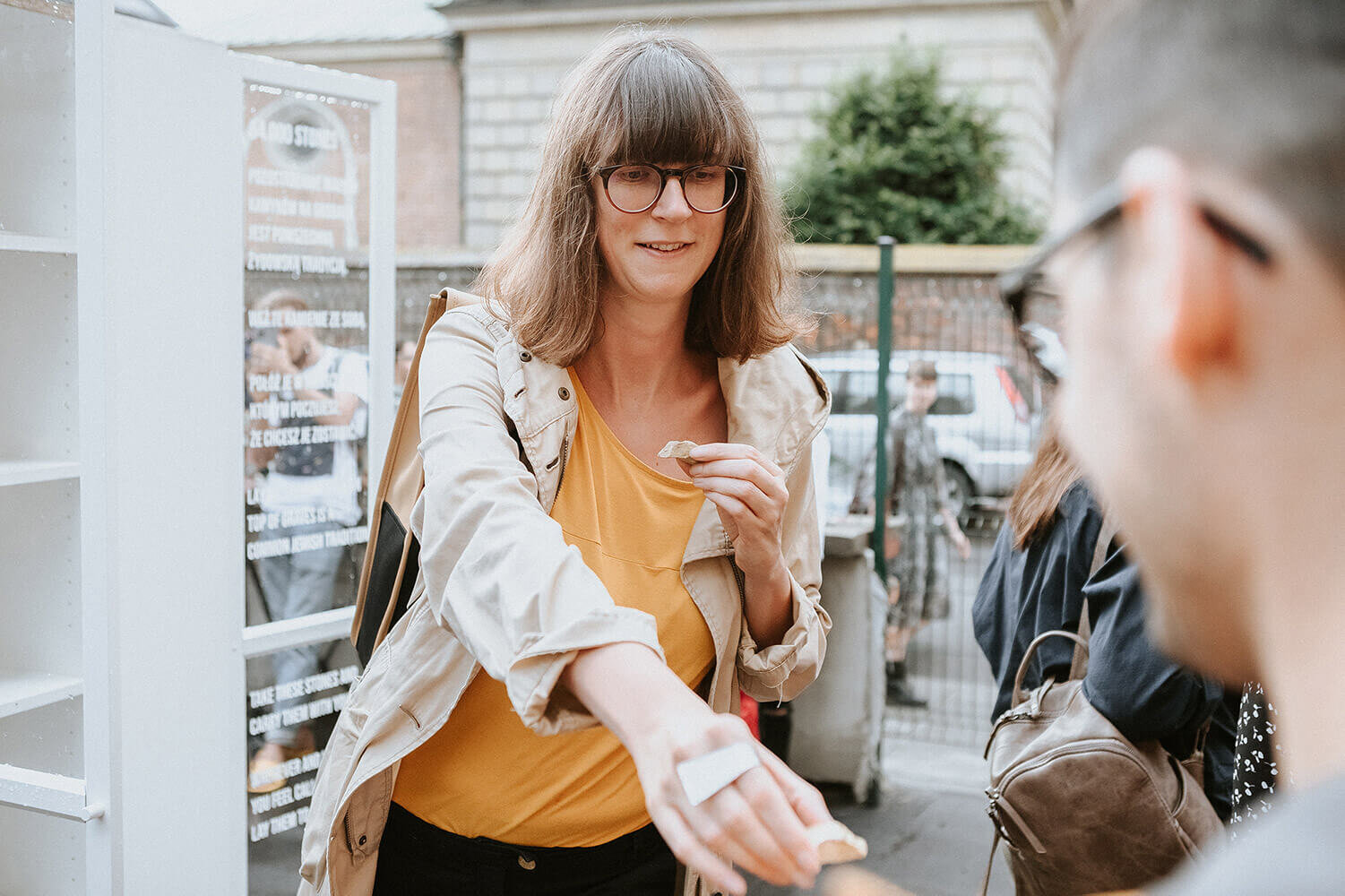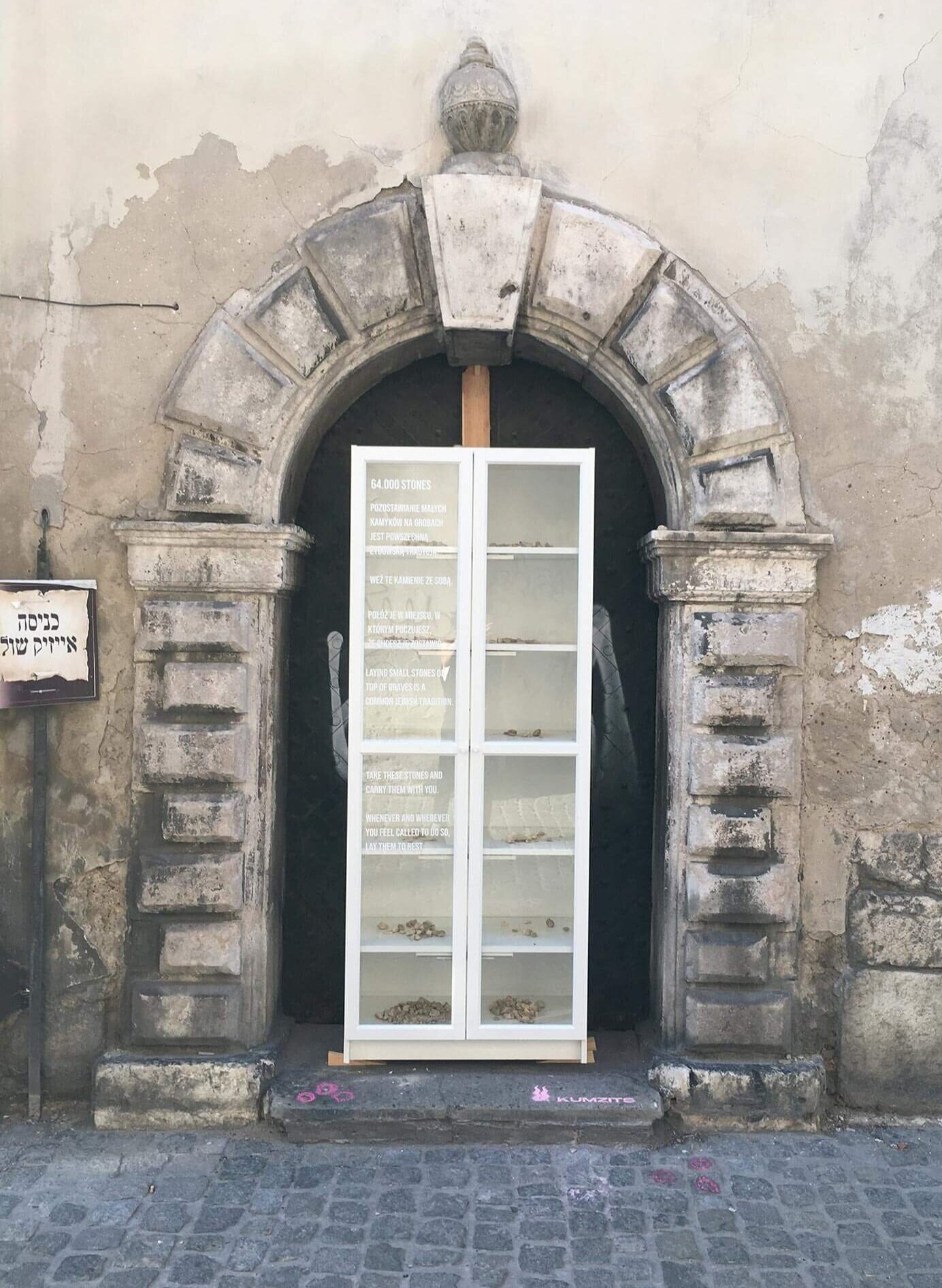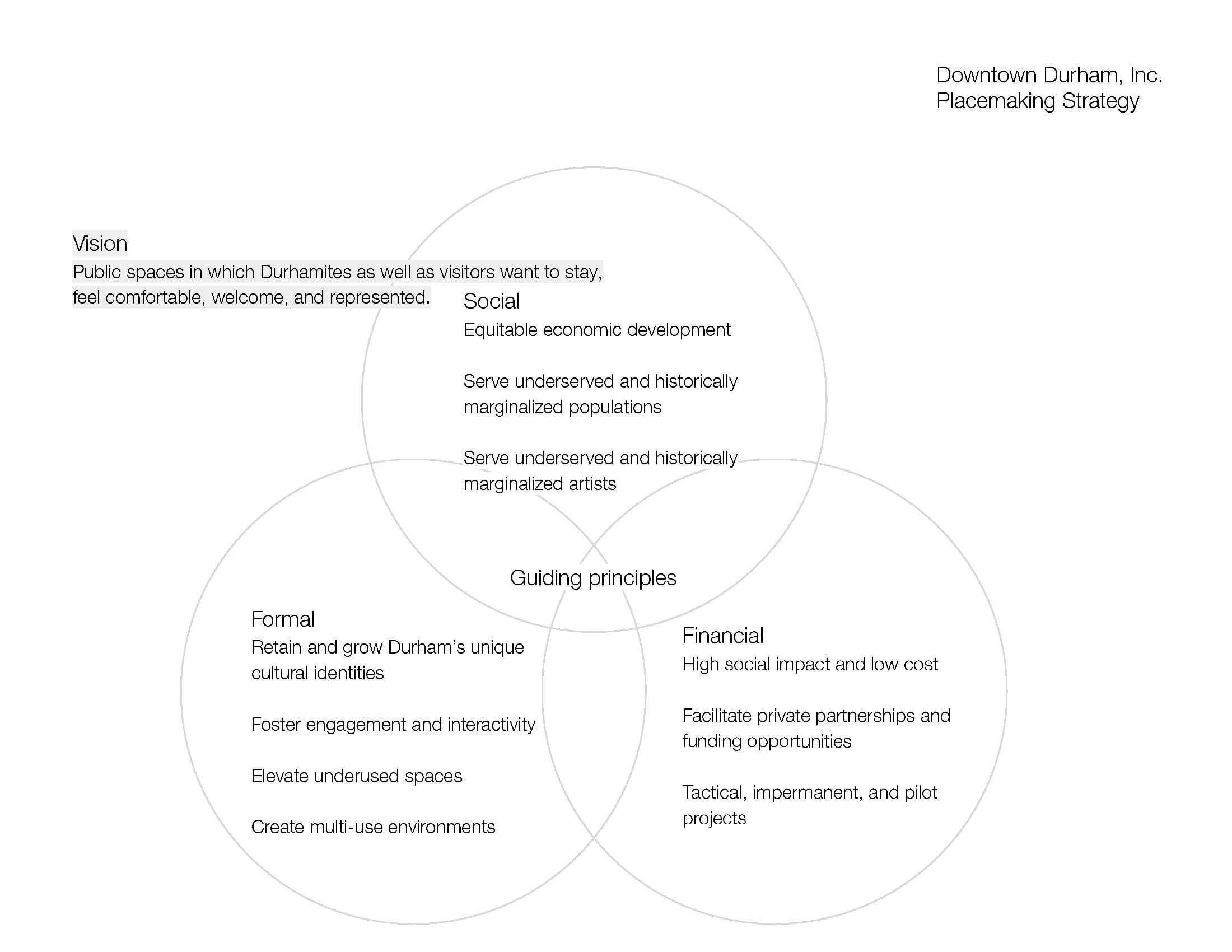Public Art: 64.000 Stones (2021)
is a site-specific installation in the historically Jewish quarter of Kazimierz in Krakow, Poland. The work invited personal performances of ritual, while encouraging dialogue regarding the tensions between touristification and remembrance.
Context
Kazimierz, once recognized as the center of Jewish culture in Poland, and then a post-war abandoned blight, has become one of the trendiest neighborhoods in Krakow. Known for its unique architecture, restaurant and bar scene, and “bohemian” artistic counter culture, the district is a top tourist destination.
Alongside the vintage boutiques and art galleries, the echoes of Jewish life and past trauma are evidenced by the popular tourist attractions of the neighborhood, including a mosaic wall of Nazi shattered Jewish tombstones, scenery from Steven Spielberg’s Schindler’s List, and a statue of Jan Karski, the Holocaust whistleblower.
Prior to WWII, approximately 64,000 Jewish people lived in the city of Krakow – an estimated 10% survived, and far fewer ever returned to Poland. From around 3.3 million Jews living in Poland before the war, to a present day 10 to 20 thousand, Poland is experiencing a revival of interest in Jewish culture. A growing Polish community is discovering and connecting with their long hidden Jewish roots.
With the influx of tourism and interest, Kazimierz has flourished with the restoration of historic sites and the development of Jewish restaurants and bookstores. Simultaneously, protests and charges of cultural exploitation have been called out by the Jewish community, such as against a trendy cafe housed in a 19th century synagogue. Recent studies have indicated that the majority of European Jewish cultural tourism is managed by non-Jews, attempting to lead a rediscovery of heritage and commodifying authentic cultural sites.
Touristification, the transformation of a place to a commodity for consumption, alienates cultures from significant and sacred spaces. Sites of mourning can become photo backdrops, while histories can be read as trivia rather than honored.
Vitrine Inscription:
Laying small stones on top of graves is a common Jewish tradition.
Take these stones and carry them with you.
Whenever and wherever you feel called to do so, lay them to rest.

















Collaboration
The public is invited to take stones from the vitrines.
Stones
Placed by participants throughout Europe.
Process and Intervention
From the discovery of the installation to the act of leaving a stone, participants engaged in a ritual, offering multiple layers of performance and interpretation. Invited by the public installations in 3 locations in Kazimierz, participants enacted the work.
The installations were composed of inscribed vitrines filled with gold painted stones. The inscription invited participants to take stones and leave them where they felt called to do so, in consideration of the Jewish tradition of leaving stones on graves.
Stones left on Jewish graves honor the dead - and while many interpretations of the tradition exist, some believe the stones offer protection from other spirits, or that they symbolize the permanence of memory.
To explore the tensions between touristification and remembrance, rather than extracting a commodity as a souvenir to represent the “experience of a place,” participants are called to leave stones in Krakow, inviting them to experience the place. They are prompted to reflect and manifest their own emotions and memories in the context of Kazimierz, not as a setting, but as a sanctuary.
They enact a personal performance of remembrance and add a record of their happening to the landscape. The very act of taking a stone from the vitrine expresses a commitment to return or offer something to the neighborhood.
In a ritual to externalize grief or honoring, the stones create a visual language of experience in space. Witnessing the stones others have left evokes a feeling of understanding, and a feeling of belonging. With an empathetic glimpse, one can recognize the stone as a marker of a sentiment and moment in time experienced by another who engaged in the same ritual.
The stones freely offer their meaning, and the feelings they embody and commemorate. They simply call on their carriers to hold them, to feel something in Kazimierz, and to let them go. The stones ask to bear witness, and to bear the weight of mourning and experience.
With each individual moment undertaken by a participant in shedding a stone, they contribute to a city-wide memorial and a silent language of respect and memory.
Exhibition Information:
30th Annual Jewish Culture Festival in Krakow, Poland
June 26 - July 4, 2021
Installation Locations: ul. Izaaka (Izaak synagogue), ul. św. Wawrzyńca 3, courtyard between streets Józefa 12 and Meiselsa 19
Included in the Kumzits series, featuring an international selection of 8 public art projects
Materials:
Vitrines, stones, gold paint, social practice






![Public Art: Fügung des Schicksals [Twist of Fate]](https://images.squarespace-cdn.com/content/v1/611c4a9feab4d91413c4ae77/65cfd2d0-c30d-436d-982d-5321a56a1dcd/RSteinWexler-F%C3%BCgung-des+Schicksals-Twist-of+Fate.jpg)
![Public Art: Wahlfamilie [Chosen Family]](https://images.squarespace-cdn.com/content/v1/611c4a9feab4d91413c4ae77/656a9772-01f9-4ef2-8bae-2bcc1c87a863/RSteinWexler-Public-Art-Wahlfamilie-Chosen-Family.jpeg)


![Proposal: Willkommenskul[p]tur](https://images.squarespace-cdn.com/content/v1/611c4a9feab4d91413c4ae77/1629617643536-EVZ02Z8DZ7OT9EN54XE0/Stein-Wexler-Willkommenskultur-Public-Art-Proposal-Immigration-Welcome-Culture.jpg)





